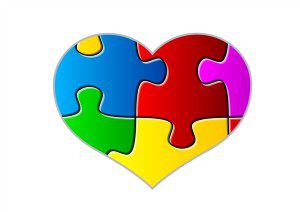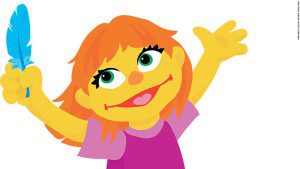Autism and Communication

Children with autism or with ASD (autism spectrum disorder) typically display difficulties in the areas of communication, social, and behavior. In regard to communication, a child may present with significantly delayed receptive, expressive, and pragmatic language skills. A child with ASD often has difficulties processing information which makes it difficult for him or her to understand language therefore the child may have difficulty understanding vocabulary (i.e., functional/daily objects, verbs, names of people, pronouns), following directions, understanding how items are related (i.e., categories), sequencing an activity (i.e., understanding the steps to brushing teeth). Expressive speech patterns of children with autism/ASD may include: repetitive/echolalic speech (i.e., A person may say ‘Put the dishes in the sink’ and the child may state ‘sink’), splintered language skills (e.g., a child may label only familiar items that he or she comes into contact with daily; vocabulary revolves around preferred items such as food, drink, toys), difficulty in social exchanges (e.g., child may have difficulty engaging in eye contact with communicative partner, conversation), or nonverbal communication (i.e., pointing, gesturing, physical manipulation of parent/caregiver—bringing toward preferred item).
Helpful tips to work on receptive language with a child with autism: Visuals are often helpful when working on targeting receptive language skills. If a child has difficulty processing language, visuals are helpful in aiding in everyday activities. Visuals can be used for making a schedule of daily events or to show a child what to expect in his or her day if it is a change from the usual. You can also use visuals in order to sequence a daily activity (e.g., making visuals to depict each stage of brushing teeth). If a child has difficulty with vocabulary, work on specific targets (i.e., functional objects—“Give me the scissors”). When vocabulary targets are beginning to be achieved, the child can work on making the connections between those objects (e.g., playing games where the child can sort colors or objects into categories—animals, clothes, food). When giving a direction, make directions clear and concise (i.e. “Get the cup”). Too much language will make it more difficult for the child to process.

Helpful tips to work on expressive language skills for a limited verbal child with autism: Repetition of skills is the key to increasing a child’s verbal ability. Work on labeling objects in the child’s everyday life and having the child imitate them. A child may be using words to communicate basic needs (i.e., food, drink, bathroom), but it may be limited to that. Continue to work on labeling words through everyday activities and commenting on activities/items/books, etc. Many children benefit from visual supports in order to communicate. Examples of these are PECS (Picture Exchange Communication System), topic boards, and communication books. PECS utilizes a notebook filled with pictures depicting items/activities a child may ask for during his or her day. A topic board is one page filled with various visuals depicting a theme in order to aid in vocabulary and sentence expansion (i.e., Mr. Potato Head topic board—sentence starters “I want” “I have”, colors, Mr. Potato Head clothing items/body parts, “more,” “please”). Communication books can have a core page of vocabulary with sentence starters and verbs such as “to play,” “to eat,” “to drink,” etc. Fringe vocabulary can continually be added and organized by vocabulary (i.e., colors, foods, drinks, toys, art supplies). Additionally, AAC may be used to aid a nonverbal/limited verbal child (i.e., Augmentative and Alternative Communication). Examples of AAC include static devices (i.e., low technology devices) and dynamic devices (e.g., computerized devices such as an IPad with a communication application).
If you are concerned about your child or have questions about Autism, any one of our talented speech therapists, occupational therapists, physical therapists, or developmental therapists will be more than happy to answer any questions you may have. Chicago Pediatric Therapy and Wellness Center has helped many families and will be happy to consult with you.


